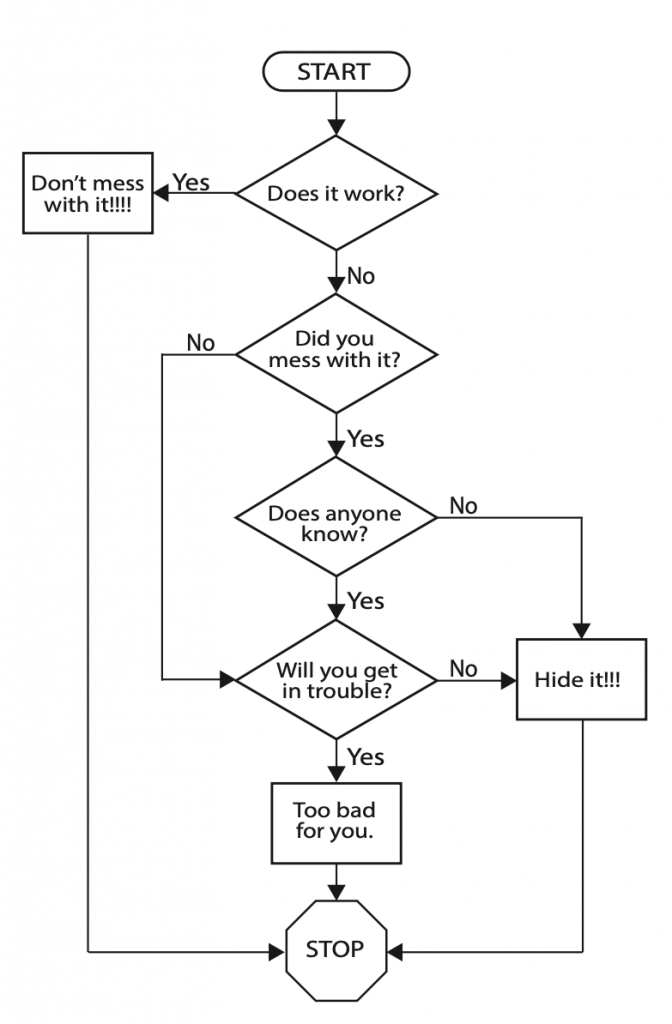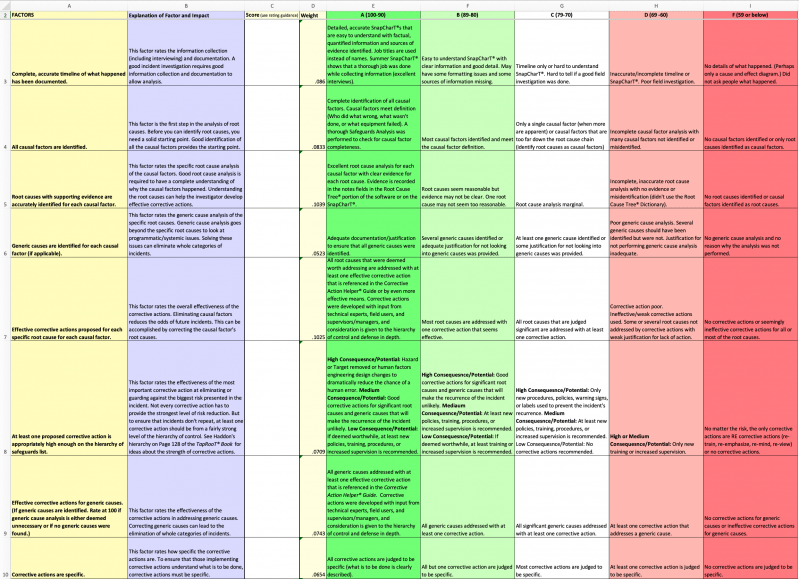Top 10 Best Root Cause Analysis Tips [2019]

How Did I Pick the Top 10 Best Root Cause Analysis Tips?
To start picking the top 10 best root cause analysis tips, I used this blog’s search history to see which tips had the most clicks and I used the blog comments history to see which articles had the most comments.
Then I reviewed the actual posts and from the top 50 best root cause analysis tips (a combination of clicks and comments), I picked the ones that I thought would teach someone interested in root cause analysis something interesting.
So what did I pick to share as the Top 10 Best Root Cause Analysis Tips?
Top 10 Best Root Cause Analysis Tips
Here are the Top 10 Best Root Cause Analysis Tips (according to me with help from you – clicks and comments).
Just click on the numbered titles below (or other links) to read any of the articles…
1. Is Human Error a Root Cause?
This article had 4,470 clicks this year and four comments.
Why did I pick it as #1 of the 10 Best Root Cause Analysis Tips?
Because so many people are interested in human errors and so many people don’t realize that the TapRooT® System is a great way to find and fix the root causes of human errors. Read the article and see if you agree. Add your comment now!
2. The DEFINITION Articles

There are four articles tied for this spot. They are:
Definition of a Root Cause (3,513 clicks this year and 3 comments)
What is Root Cause Analysis? (republished in August and just 577 clicks this year)
What is a Causal Factor? (an old article refreshed in September 2019, with 3,395 clicks this year and 6 comments)
Comparing Common Root Cause Analysis Techniques (1,538 clicks this year and 3 comments)
The last article, Comparing Common Root Cause Analysis Techniques, isn’t strictly a definition article. But it does “define” various root cause analysis tools so you can compare them.
I consider all four of these articles as “foundational” root cause analysis articles. In other words, all TapRooT® Users and anyone really interested in root cause analysis should read them.
3. Are You Using TapRooT® the Right Way for Simple Incident Investigation?
I think this is a very important article that many have overlooked. It was published in February and received 1,439 clicks this year. But I find that MANY TapRooT® Users don’t know that we have created a simple way to use TapRooT® to investigate simple incidents. This new way to use the TapRooT® System can save you time and effort.
Here is a related article about spotting “weak signals”:
4. What Vision for Root Cause Analysis Does Your Company Have?
I think the vision a company has for root cause analysis is extremely important. That’s why I rated this article as #4.
What vision does your company have? Blame, Crisis Management, or Opportunity to Improve?
Here is a related article:
Is Blame the Best Root Cause Analysis Tool?
5. What is a Precursor Incident?

Do you know what a precursor incident is? Are you investigating and fixing your precursor incidents?
This is a 2018 article that is just as important today as it was then. It is a short article but everyone should read it and think about it.
Here are two related articles:
Precursor Incidents – Why You Should Sweat The Small Stuff
6. Confirmation Bias – Can You Think It Away?
This one is from 2018 and only had 230 clicks this year (and two comments). But it is really important information for anyone who thinks they can use a cause-and-effect based root cause analysis system. Therefore, I included it as #6.
By the way, here is another “scientific” article about root cause analysis that didn’t make the cut but that you might find interesting is:
Scientific Method and Root Cause Analysis
7. Root Cause Tip: Making Team Investigations Work
This is one of the oldest articles on this list – from 1994! Yes, this predates this blog and came from the Root Cause Network™ Newsletter (the precursor to the blog). Do you have better ideas since this was first published in 1994? Leave them as comments!
Here is a related article about planning major investigations:
8. Root Cause Analysis Tip: Top 10 Investigation Mistakes (in 1994)
Sometimes it can help you contemplate improvement if you consider where you have been (let’s say in 1994), where you are (today), and where you want to be (maybe 5 years in the future). This article lists the Top 10 investigation mistakes from attendees at the 1994 TapRooT® Summit in Gatlinburg, Tennessee. (That’s right! Our FIRST Summit.)
The Top 10 Investigation Mistakes in 1994 were:
- Management revises the facts. (Or management says “You can’t say that.”)
- Assumptions become facts.
- Untrained team of investigators. (We assign good people/engineers to find causes.)
- Started investigation too late.
- Stopped investigation too soon.
- No systematic investigation process.
- Management can’t be the root cause.
- Supervisor performs the investigation in their spare time.
- Fit the facts to the scenario. (Management tells the investigation team what to find.)
- Hidden agendas.
We republished the list in 2014 to see if much had changed in twenty years.
What about today? I bet there are facilities that are the same as they were in 1994 – with the same top 10 investigation mistakes. Other facilities have improved but still have a few of these mistakes unsolved since 1994.
What you think about your facility. How many problems do you have to solve from 1994? Leave a comment if you think things have drastically improved since 1994 or, perhaps, your facility still needs improvement.
Now … what are you doing to stop your biggest investigation mistakes that exist TODAY?
9. Grading Your Investigations
This article is an old one (first published in 2014) and only had 402 clicks this year. But it has been republished several times and had 6 Global TapRooT® Summit sessions about it. I think it is worth downloading the spreadsheet (click on the picture above) to rate/grade your company’s incident investigations/root cause analyses. Therefore, it comes in at #9!
If you have any questions about grading your investigator’s root cause analyses, we developed a webinar to teach it:
https://store.taproot.com/search?q=Grading
10. 5-Whys Example – Is this Root Cause Analysis?
This article had 4,516 clicks this year and a total of 76 comments and was recently republished in October of 2019.
With 4,516 clicks and 76 comments, why did I rate this article as #10? Because I thought that most TapRooT® Users already know that the 5-Why technique IS NOT a good root cause analysis technique. But when you read the comments you will see that many people were SHOCKED that I thought that 5-Whys was a substandard root cause analysis tool. And even after reading about the technique’s limitations, they continue to think it is OK to use and would recommend it to others (maybe they should read articles #5 and #6).
Read the 5-Why article and see what you think. Is the 5-Whys Technique root cause analysis? Then leave a comment!
Do You Need To Improve Your Root Cause Analysis?
Here’s an important root cause analysis tip…
Every year at the Global TapRooT® Summit, we share our best ideas, best practices, and technical knowledge to help you improve your root cause analysis and performance improvement programs. If you are interested in the best root cause analysis tips – YOU SHOULD BE AT THE SUMMIT!
Categories
Root Cause Analysis Tips











